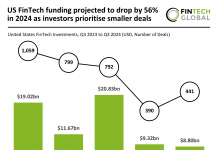Wealth managers might not be aware, but there is a revolution underway in how they handle customer journeys. Traditionally a firm has used a customer relationship management (CRM) solution to track engagements, but this is being made redundant by the better equipped client lifecycle management (CLM) solutions.
What is the difference between a CLM and a CRM solution? The way Lucy Heavens, marketing director at Wealth Dynamix, explained it is that CLM is “basically a kind of turbocharged CRM.” A typical customer journey in wealth management begins with engaging with the client during the acquisition stage, followed by onboarding the client and then moving into managing the ongoing relationship and client servicing. A CRM solution would traditionally sit at that final spot to manage the relationship once they are a client, whereas a CLM solution manages the full end-to-end client lifecycle, offering a single dashboard that empowers wealth managers to handle customer journeys more efficiently. CRM and CLM are two different types of systems and Heavens made it clear the move towards CLM is a revolution and not simply an evolution. CRM systems have progressed over the years, but CLM is something very different.
To better illustrate why CLM is better for companies, Heavens used an analogy of an orchestra. If you were to ask each of the musicians to play a tune on their own instrument, it would sound beautiful, but if you tried to get a group of musicians to work together without a conductor or a song sheet, the noise would be horrendous. A conductor is requited to paint the full picture and tell them how to play in harmony.
“This is the same within wealth management organisations. But in this case, all those instruments represent the different departments or the various stages of the client lifecycle that are being managed. Individually each of them look like they’re playing their own lovely tune but put it all together and you have a noisy customer journey.” This is where a CLM solution, like Wealth Dynamix, acts like an orchestration layer to bring the functions together to produce a consistent flow of seamless processes.
Why is there this revolution?
The CLM revolution is the result of three main drivers. The first comes from the scale and complexity of regulations hitting financial institutions. Since the financial crisis, regulators have tried to ensure a similar catastrophe does not happen again. This boils down to a lot more regulations and frequent updates. One of the biggest time burdens from this is in onboarding, which involves lengthy due diligence processes. It is estimated a relationship manager spends 1.5 days each week simply onboarding new customers to the organisation, according to a report from Global Legal Entity Identifier Foundation. This time sink not only loses productivity but could cost customers. In a survey from Fenergo, 36% of financial institutions claimed they have lost clients due to poor onboarding and KYC.
There are many other regulatory requirements relationship managers need to keep in mind whenever they interact with a client. Heavens added, “A relationship manager is not a compliance expert, yet they’re having to try and work out all the details of these regulations to make sure they’re doing the right thing.”
This has only got harder over the past year. There are many more channels for interacting with a client, whether it is in-person, via email, on the phone, through video conference, messaging apps etc. These all have different regulatory parameters staff need to be mindful of. A CLM solution ensures the manager has all the information they need in one location and can even provide them with the necessary tools for compliance or reminders of what to do.
The second driver of the CLM revolution is competition. With the advent of digital wealth managers like Wealthify and Nutmeg, there is more pressure for traditional wealth management firms to prove their fees are worth it, Heavens explained. A report from Capgemini stated 33% of high-net worth individuals are unhappy with the fee structures of their wealth managers and 22% are planning to switch managers in the coming year, with high fees their main reasoning. “They can no longer rely on a relationship built on face-to-face meetings like they have done in the past. They’ve got to be able to engage with more digital-savvy clients to compete with these online providers.”
Simply put, the higher the fees you charge, the better the experience must be. “If you go into a Michelin star restaurant you expect a high level of ‘white glove service’. In the same way, if you’re with a wealth manager and paying up to 5% fees you expect something back from that. And it’s got to be top notch.” Many retail investing platforms do not have that high level of service, but when you only pay 0.5% fees, a client is likely to be happy doing more by themselves, such as a bit of research.
Heavens gave a poignant example from a panel she once attended. The discussion involved a traditional wealth manager who was adamant WealthTech companies were not competition and not worth their worry. The reason given was that the new online investment platforms are targeting millennials, the younger mass-affluent segment of the market. This mindset is potentially disastrous in the long run. “When those Millennials or Gen X inherit the next generation of wealth, where are they going to put their money? Will they pick a wealth manager they’ve never personally met or spoken to and only ever takes their dad or mum out for dinner? Or will they go with the provider that has been looking after their own money for years and doing a really good job for a very low fee, as well as knowing a ton of stuff about them?” CLM tools will enable that wealth manager to improve their interactions with customers and provide similar services as the online only rivals.
Customer expectations
This links in with the third driver of the revolution, which is client expectations. As the wealth slowly moves over to the new generation, so will the requirement for firms to have customer-centric approaches that provide more personalised services. People have been influenced by companies like Netflix and Amazon and expect digital operations to be streamlined and simplified. While Heavens stated wealth management is not the same and will never be like those types of services, clients are still influenced by it regardless and anything too complex could put people off.
To provide companies with this improved customer experience, it comes down to the use of data. With regulations like the GDPR and the CCPA, there is often a sense people do not like sharing their private information, but that is not always true. According to a report from EY, it claimed 53% of consumers are willing to pay more for a personalised service. Furthermore, 71% of customers say they would share their personal data for better experiences.
Unfortunately, not all traditional wealth managers really understand what personalisation means. Heavens stated that firms often believe personalisation is simply addressing an email directly to the person, rather than using a generic sir or madam. But that doesn’t really achieve anything. True personalisation is using the data collected throughout the customer lifecycle and leveraging it to offer services that would be of interest and add additional value to the customer.
For example, if a client has previously expressed how passionate they are about environmental or sustainability issues, there is no point for a wealth manager to suggest investments in firms that do not support those values. CLM platforms empower firms to leverage all the data they have on a client and generate personalised recommendations. A CRM solution would not be capable of doing this type of job, as it fails to look across or connect all customer touchpoints. Instead, the firm would likely have a separate onboarding team which asks them their interests and financial goals. Following this, the client would be connected with a relationship manager, who could potentially ask all the same questions. This just annoys the client who must repeat themselves and potentially misses valuable information from the onboarding stage.
The future of CLM
User adoption of CRM has not been as high as it should be, and this could impact the adoption of CLM. Heavens explained that she previously met someone at a wealth management firm that had “CRM Fridays.” During this, the team would spend their entire afternoon just reconciling data and updating the system. All of whom hated doing so and felt the CRM system added no value at all to their role. Heavens said, “That broke my heart. But unfortunately, this is what many people think about CRM systems. It’s just a case of plugging the data in because we’re not getting anything out of it.”
Due to this, CLM solutions need to be intuitive so teams can see the value of the system. They need to ensure people can easily get a holistic 360-view of the client and their client base and generate valuable insights, without lots of extra work.
In the coming years, Heavens expects CLM solutions to become much more common, and even a necessity. Firms that don’t implement them could even see a loss in market share due to other competitors being able to offer a more personalised service and streamlined operations. The pandemic has only helped to accelerate the shift from CRM to CLM. With staff working remotely, having systems that are not connected creates more gaps and makes it harder for staff to work efficiently. As firms become more digital, they will need a CLM solution that can bring everything together and ensure all parts of the business work together, rather than independently.
CLM solutions are becoming more readily available which will also drive increased adoption. While they were previously only realistic for a big firm, thanks to cloud and SaaS technology, smaller firms can start to implement these types of tools and transform their front-office operations into a symphony.
Copyright © 2021 FinTech Global











